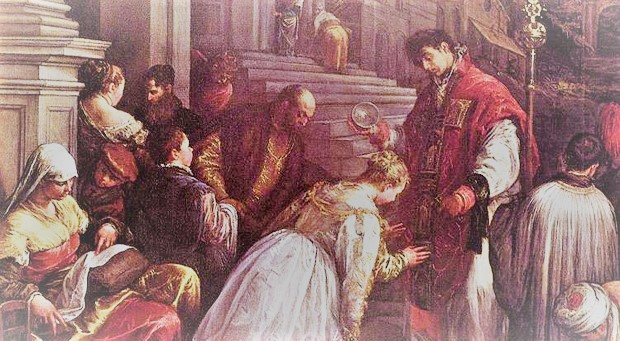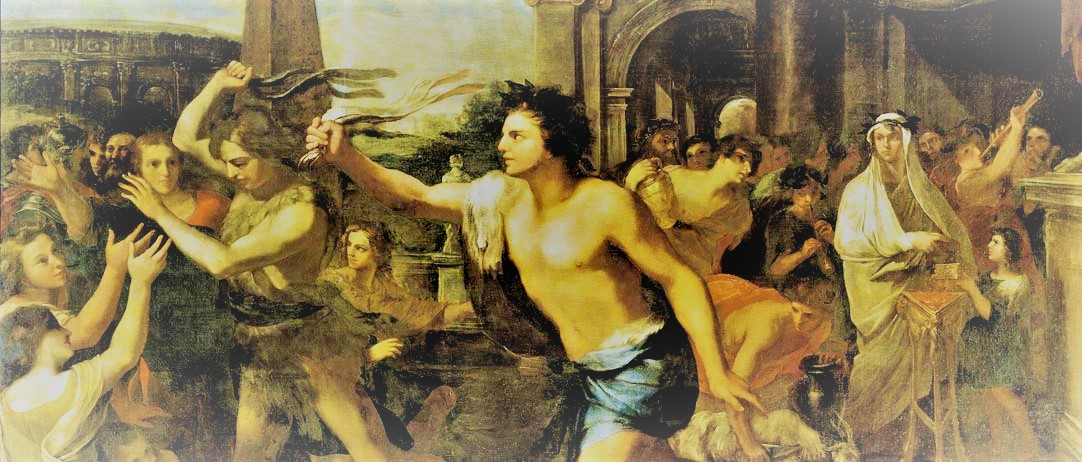The History of Valentines Day: Three Murky Tales

Have you ever wondered about the history of Valentine's Day? As it turns out, there are many colorful tales regarding the origin of this mysterious and delightful holiday. As far as I can tell there is no widely accepted story of authority explains this peculiar holiday laden with tradition. I assumed that this day of celebration love had Christian roots since it is named after a saint. As it turns out, Valentine's Day has roots in both Christian and Pagan tradition dating all the way back to A.D. 270. Since there is no real consensus concerning, I have decided to present you with three different tales of origin. Although these three tales seem to represent the history of Valentine's Day independently, I suspect that contemporary Valentine's Day traditions draw from each. It is clear that the history of Valentine's Day contains elements of fertility, love, sacrifice, wolves, torture and Roman soldiers.

The History of Valentine's Day: The Catholic Story (Two Stories)
It is clear that the Catholic church recognizes a martyred man named Saint Valentine. However, there are several different stories about this man and the way he lived his life that ultimately inspired the day of celebration we know today as Valentine's Day. One factor contributing to some of the confusion around the origin of Valentine's Day is that the Catholic church recognizes three different Saint Valentines. According to the church, all three Saint Valentines were martyred.
- Legend 1 - During the reign of Roman emperor Claudius Gothicus, also known as Claudius II, it was determined that single men made the best soldiers because they did not fret over wives and children. As a result, Claudius II created a law forbidding marriage in order to increase the power of his army. Valentine, a Catholic priest at the time, rightly viewed this new law as unjust and not a lot of fun. In response, he performed secret marriages for many young lovers. Claudius uncovered Valentine's noble plot, arrested Valentine and had him put to death.
- Legend 2 - Roman prisons were notoriously harsh during the time of Saint Valentine. They were also packed full of Christians who had been arrested for practicing their faith traditions. Valentine used his connections and his standing as a priest to assist in the escape of many of these Christian prisoners. Eventually, Valentine was caught, imprisoned, and sentenced to death. During his time in jail before being executed, Valentine fell in love with the jailor's daughter. Before he was executed he penned a letter to his love signing it, From Your Valentine, a phrase that would stand the test of time.

The History of Valentine's Day: The Pagan Story
Sometime around A.D. 270, the Catholic church added the Feast of St. Valentine to the liturgical calendar in the middle of February. Some stories suggest that February 14th was the day of Valentine's execution while others believe the positioning of this feast day close to the pagan celebration of Lupercalia. Occasionally this has been the strategy of the church hoping to inject some Christianity into widely celebrated Pagan festivals. Lupercalia was a fertility festival that involved all kinds of wild ritual including sacrificing a goat and a dog, skinning the goat and cutting the goat skin into strips. The strips would then be dipped in blood and the priest would go around town slapping women and crops with the bloody goat skin strips. The ritual was intended to improve the fertility of both women and fields during the upcoming spring season. After being slapped with the bloody skins, the women would toss their name in a bin and bachelors would draw names. Once the pair was in place the couple would be matched up for a year. Sometimes these pairings would result in love, marriage, and children.
Today Valentine's is celebrated in Canada, Mexico, the United Kingdom, Australia, France, and the United States. You can see that many contemporary Valentine's Day rituals have roots in the celebrations uncertain past. Americans have been exchanging cards expressing their love since the early 1700s. Back then Valentine's Day cards were handmade. Today Americans purchase and deliver over 1 billion Valentines, second only to Christmas. Although Saint Valentine may have been the first to give a valentine, 85% of Valentine's Day cards are purchased by women. Go figure!
If you are still in need of ideas for your Valentine, check out the post 5 Great Valentine's Day Gifts for 2019
Happy Valentine's Day from Dad's Tie!
- No comments yet.
Trending Now
We've collected our users' most popularly posted gifts over the last year and filtered the results for the page you are on. Feel free to use the available filters to narrow down your search by age range, gender, location, and occasion. You can also use our price, popularity, rating, and vendor filters to narrow your results down further. These are our the history of valentines day: three murky tales.
Visit Our our Gift Ideas page and our blog for more ideas!